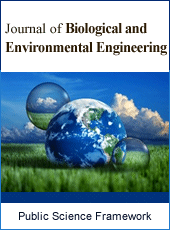Journal of Biological and Environmental Engineering
Articles Information
Journal of Biological and Environmental Engineering, Vol.1, No.1, Sep. 2016, Pub. Date: Jul. 27, 2016
Utilization of Plastic Bottle Waste in Concrete
Pages: 1-5 Views: 4373 Downloads: 2591
[01]
Salahaldein Alsadey, Department of Civil Engineering, Faculty of Engineering, Bani Waleed University, Beni Walid City, Libya.
Now a day are facing environment protection problems. Many things which are invented for our luxurious life are responsible for polluting environment due to improper waste management technique. One of them is a plastic which has to be disposed or recycled properly to maintain the beauty of our nature. On the other hand, urbanization growth will increase rubbish especially non-renewable ones. Eco friendly architectural principles are being incorporated into more buildings every day in the world but they are still out of reach of many people due to lack of knowledge and awareness. In this study is to explore the possibility of recycling a plastic bottles waste material. To address this issue the fibers from used plastics were added in various percentages in the M25 grade concrete. An experimental work has been carried out on the specimen’s cubes which were casted in the laboratory and their behavior under the test was observed. The plastic fibers were added from 0.0% to 3.0%. The compressive strengths of concrete were determined after 28 days of curing period and compared with control concrete. Experiments done shows increase in compressive strength by 12%. Plastic bottle fibre additive can be adopted. The plastic bottle fibre reduces the quantity of industry fibers used in concrete and also plastic bottle fibre is proved to be more economical.
Compressive Strength, Plastic Bottles, Flakes, Environmental, Recycling
[01]
Seyed Hamed and Younes Saberi (2014) “Study on the Effect of Polypropylene Fibers on Strength and Heat Resistance of Concrete”. World Applied Sciences Journal 31 (5):767-770, 2014, ISSN 1818-4952.
[02]
Salahaldein Alsadey (2016) “Effect of Polypropylene Fiber Reinforced on Properties of Concrete”. Journal of Advance Research in Mechanical and Civil Engineering.
[03]
Banthia N, Zanotti C, Sappakittipakorn M. Sustainable fiber reinforced concrete for repair applications. Construction and Building Materials 2014; article in press.
[04]
Song PS, Hwang S, Sheu BC. Strength properties of nylon- and polypropylene fiber reinforced concretes. Cement and Concrete Research 2005; 35(8):1546–1550.
[05]
Nili M, Afroughsabet V. The effects of silica fume and polypropylene fibres on the impact resistance and mechanical properties of concrete. Construction and Building Materials 2010; 24(6):927–933.
[06]
Fraternali F, Ciancia V, Chechile R, Rizzano G, Feo L, Incarnato L, Experimental study of the thermo-mechanical properties of recycled PET fiber-reinforced concrete. Composite Structures 2011; 93:2368–2374.
[07]
Karahan O, Atis CD. The durability properties of polypropylene fiber reinforced fly ash concrete. Mater Des 2011; 32(2):1044–1049.
[08]
Kim SB, Yi NH, Kim HY, Kim J, Song Y. Material and structural performance evaluation of recycled PET fiber reinforced concrete. Cement and Concrete Composites 2010; 32:232–240.
[09]
Fraternali F, Spadea S, Berardi VP. Effects of recycled PET fibres on the mechanical properties and seawater curing of Portland cement-based concretes. Construction and Building Materials 2014:61:293–302.
[10]
Silva DA, Betioli AM, Gleize PJP, Roman HR, Gómez LA, Ribeiro JLD. Degradation of recycled PET fibers in Portland cement-based materials. Cement and Concrete Research 2004; 35:1741–1746.
[11]
Pereira de Oliveira LA, Castro-Gomes JP. Physical and mechanical behaviour of recycled PET fibre reinforced mortar. Construction and Building Materials 2011; 25:1712–1717.
[12]
Ozger OB, Girardi F, Giannuzzi GM, Salomoni VA, Majorana CE, Fambri L, Baldassino N, Di Maggio R. Effect of nylon fibres on mechanical and thermal properties of hardened concrete for energy storage systems. Materials and Design 2013; 51:989–997.
[13]
Fraternali F, Farina I, Polzone C, Pagliuca E, Feo L, On the use of R-PET strips for the reinforcement of cement mortars. Composites Part B – Eng 2013; 46:207–210.
[14]
ACI 544.1R (1996). State-of-the-Art Report on Fiber Reinforced Concrete, American Concrete Institute, Farmington Hills, Michigan.
[15]
ACI Committee 544. 1982. State-of-the-Report on Fibre Reinforced Concrete, (ACI 544.1R-82), Concrete International: Design and Construction. 4(5):9-30, American Concrete Institute, Detroit, Michigan, USA.
[16]
ACI Committee 544. 1989. Measurement of Properties of Fibre Reinforced Concrete, (ACI 544.2R-889).
[17]
ASTM C192/C192M-02, “Standard Practice for Making and Curing Concrete Test Specimens in the Laboratory”, Annual Book of ASTM Standards, Vol.04.02, 2003; pp. 126-133.
[18]
British Standard Institution, BS 1881: Part 102 (1983). “Methods for Determination of Slump”.
[19]
British Standard Institution, BS 1881: Part 116 (1983). “Methods for Determination of Compressive Strength of Concrete Cube”.

ISSN Print: Pending
ISSN Online: Pending
Current Issue:
Vol. 2, Issue 2, March Submit a Manuscript Join Editorial Board Join Reviewer Team
ISSN Online: Pending
Current Issue:
Vol. 2, Issue 2, March Submit a Manuscript Join Editorial Board Join Reviewer Team
| About This Journal |
| All Issues |
| Open Access |
| Indexing |
| Payment Information |
| Author Guidelines |
| Review Process |
| Publication Ethics |
| Editorial Board |
| Peer Reviewers |


